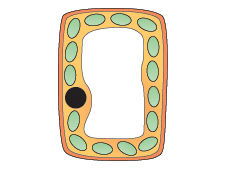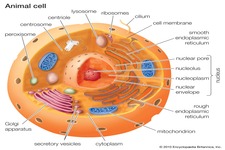- Error
-
- JUser::_load: Unable to load user with id: 1552

Plant Cell vs. Animal Cell
※ Download: Bbc best animals and plant cells
No data is shared with Paypal unless you engage with this feature. Login This is necessary to sign in to the HubPages Service.

While animal and plant cells reproduce by mitosis or meiosis, prokaryotes propagate most commonly by binary fission. Compared to other living organism, plants can make their own food.

These cells have a true , which houses and is separated from other cellular structures by a nuclear membrane. Both of these cell types have similar processes for reproduction, which include and. Animal and plant cells obtain the energy they need to grow and maintain normal cellular function through the process of. Both of these cell types also contain cell structures known as , which are specialized to perform functions necessary for normal cellular operation. Animal and plant cells have some of the same cell components in common including a nucleus, complex, , , , , , and. While animal and plant cells have many common characteristics, they are also different. Animal cells range from 10 to 30 micrometers in length, while plant cells range from 10 and 100 micrometers in length. Shape Animal cells come in various sizes and tend to have round or irregular shapes. Plant cells are more similar in size and are typically rectangular or cube shaped. Energy Storage Animals cells store energy in the form of the complex glycogen. Plant cells store energy as starch. Proteins Of the 20 needed to produce , only 10 can be produced naturally in animal cells. The other so-called essential amino acids must be acquired through diet. Plants are capable of synthesizing all 20 amino acids. Differentiation In animal cells, only are capable of converting to other cell types. Most plant cell types are capable of differentiation. Growth Animal cells increase in size by increasing in cell numbers. Plant cells mainly increase cell size by becoming larger. They grow by absorbing more water into the central vacuole. Cell Wall Animal cells do not have a but have a. Plant cells have a cell wall composed of cellulose as well as a cell membrane. Centrioles Animal cells contain these cylindrical structures that organize the assembly of microtubules during. Plant cells do not typically contain centrioles. Cilia Cilia are found in animal cells but not usually in plant cells. Cytokinesis Cytokinesis, the division of the during cell division, occurs in animal cells when a cleavage furrow forms that pinches the cell membrane in half. In plant cell cytokinesis, a cell plate is constructed that divides the cell. Glyoxysomes These structures are not found in animal cells but are present in plant cells. Glyoxysomes help to degrade , particularly in germinating seeds, for the production of sugar. Lysosomes Animal cells possess which contain enzymes that digest cellular macromolecules. Plant cells rarely contain lysosomes as the plant vacuole handles molecule degradation. Plastids Animal cells do not have plastids. Plant cells contain plastids such as , which are needed for. Plasmodesmata Animal cells do not have plasmodesmata. Plant cells have plasmodesmata, which are pores between plant cell walls that allow molecules and communication signals to pass between individual plant cells. Vacuole Animal cells may have many small. Plant cells have a large central vacuole that can occupy up to 90% of the cell's volume. Prokaryotes are usually single-celled organisms, while animal and plant cells are generally multicellular. Eukaryotic cells are more complex and larger than prokaryotic cells. Animal and plant cells contain many organelles not found in prokaryotic cells. Prokaryotes have no true nucleus as the DNA is not contained within a membrane, but is coiled up in a region of the cytoplasm called the nucleoid. While animal and plant cells reproduce by mitosis or meiosis, prokaryotes propagate most commonly by binary fission.
Plant Cells vs. Animal Cells (With Diagrams) - Comparison chart Animal Cell versus Plant Cell comparison chart Animal Cell Plant Cell Cell wall Absent Present formed of cellulose Shape Round irregular shape Rectangular fixed shape Vacuole One or more small vacuoles much smaller than plant cells.

Plant cells are more similar in size and are typically rectangular or cube shaped. Animal and plant cells obtain the energy they need to grow and file normal cellular function through the process of. Vacuole Animal cells may have many small. A golgi apparatus in the cell provides the means to move the proteins and elements created within the cell to other parts of the cell. Cloudflare This is a cloud CDN service that we use to too deliver files required for our service to operate such as javascript, cascading style sheets, images, and videos. Plant and animal cells are two of the most common eukaryotic cells that help to define the differences between plants and animals cells from fungi or protists, microscopic eukaryotic-celled creatures.
